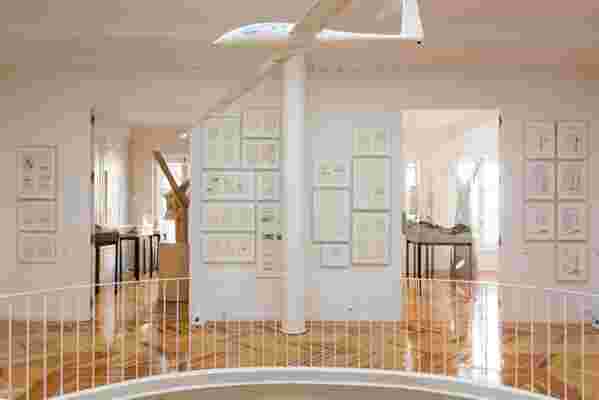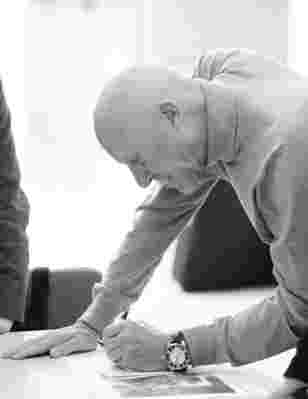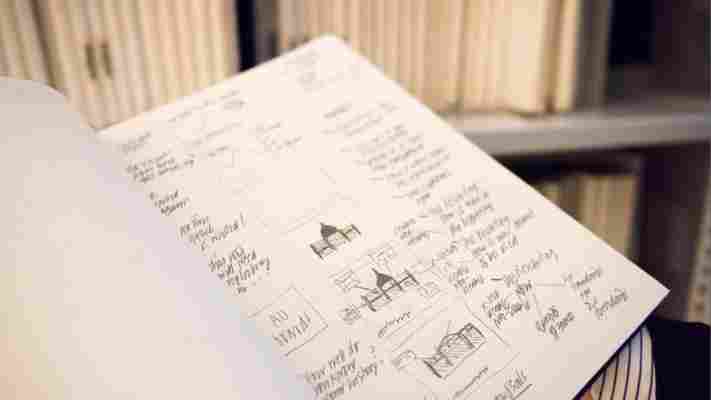The Norman Foster Foundation in Madrid Is an Architecture Lover’s Dream
It’s been well over 50 years since Norman Foster hopped into a VW with two fellow Yale architecture students and drove cross-country to Los Angeles to see Case Study Houses that were assembled from off-the-shelf steel parts by L.A.’s avant-garde, including Charles and Ray Eames. That simple idea about architectural componentry and systems design would become the basis for Foster + Partners , perhaps the first and foremost of the world’s global high-tech practices. The drawings and models of airports, museums, skyscrapers, and even parliaments that Lord Foster designed are archived and exhibited in a newly restored 1912 mansion in the diplomatic quarter of Madrid. The Norman Foster Foundation opened to the public this month.
Norman Foster is now 82, and he’s done something about it. With the precision of a field marshal operating on several fronts, the London-based architect opened his foundation in an hôtel particulier in Madrid and officiated over a fast-paced, thought-provoking symposium, “Future is Now.” He closed the two-day event with an elaborate banquet for 200 international guests in a wing of the Prado, complete with harlequined jugglers, flame-swallowers, and singers and dancers performing traditional Spanish songs and dances. The Mayor of Madrid, Manuela Carmena, greeted the symposium’s 1,800 attendees, welcoming Foster as an honorary madrileño .

Inside the Norman Foster Foundation.
After the fabled Baron Thyssen-Bornemisza Museum of old and modern masters, Foster’s foundation marks the second time in recent history that a foreigner has brought a ranking cultural institution to the Spanish capital. At the banquet, the architect said that without his Spanish wife, Elena, the foundation would not exist.

Norman Foster.
The day-long Friday symposium in the Royal Theater, across a plaza from the Royal Palace, took architecture as the point of departure into the impending global future of massive urban population influx, which is already leading to pressing questions about the environment, infrastructure, public health, and the stewardship of the earth. Instead of creating a vanity project, Foster has dedicated his foundation as a working center for research and discussion to help provide answers through interdisciplinary collaboration between architects, planners, environmentalists, and artists, who all spoke at the symposium. Speakers included New York’s former mayor Michael Bloomberg, Apple’s Jonathan Ive, digital guru Nicholas Negroponte, and artists Maya Lin and Olafur Eliasson. Christiane Amanpour moderated one of the three discussions.

One of Foster's sketchbooks.
Besides being a research and education center, the foundation serves as a museum exhibiting models and drawings from all phases of Foster’s prolific career. The extensive archives and model collection, displayed in galleries on three floors of the ornate turn-of-the-last-century stone structure, includes even juvenilia. His personal sketchbooks start when he was 13, when he voraciously drew, as he says, “anything that moves”: locomotives, cars, airplanes. The Pavilion, a futuristic structure adjoining the Foundation enclosed with massive planes of glass, holds the many talismanic objects that have inspired him, displayed on open glass shelves—models of cars, furniture, and buildings by other architects. The one full-size object is the 1925 Avions Voisin two-door car that once belonged to Le Corbusier, who preached that architecture was a machine for living in. Foster bought, restored, and now drives the car, whose engine was fabricated by a company that made airplane motors. Foster himself is also an accomplished pilot who owns and flies his own jet. He expresses his aeronautical sensibility in his buildings with designs that are “yar,” like spirited, tautly equipped yachts.
The Pavilion.
The foundation will function as a major cultural magnet on the world stage, attracting scholars, architects, and especially students, many on grants funded by the foundation. Beyond serving as objects of research, the drawings and models double as autobiographical artifacts documenting the long and remarkable career of an architect who brought the high-tech movement into large-scale buildings erected around the world.
But just why did this major cultural institution about a major British architect wind up in Madrid? Best to ask his Spanish wife.